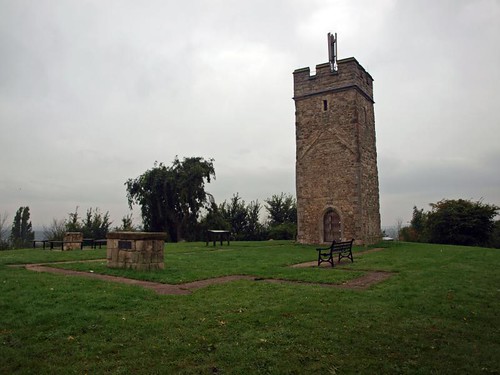Here lies a weak and sinful worm
The vilest of her race
Saved through God’s electing love
His free and sovereign grace.
A quick search of census returns shows that she was born to a non conformist family on 30th Mar 1837 and in 1851 was a nursemaid in Paddington, in 1861 a general servant in Salford (which is rather more surprising than her supposed witchedness) and in 1871 was in St Pancras as a general servant. She died in 1879 aged 42 of heart disease - more likely overwork, poor diet and living conditions - and her epithet is no odder than most.
As to the ghosts: there are supposedly regular sightings of a pair of Shuck dogs and other apparitions around the churchyard. A quick Google turns up all sorts of nonsense if you're interested.
Made redundant in 1983 it was subsequently severely damaged by vandalism and the chancel and nave were demolished in 1998. The tower was claimed by Orange as a mobile phone mast thus saving it for the future.
Restoration, though highly unlikely, is not impossible as much was saved and is kept in storage.
Knowing nothing about Pitsea, and being a transitory visitor, it's not really my place to comment on the town but this rang true.
ST MICHAEL. On a hill with a fine view of the Holehaven Creek and towards the Thames. 1871 by Sir Arthur Blomfield, with much restored W tower of c. 1500. - PLATE. Cup of 1568; Paten on foot of 1692.
Restoration, though highly unlikely, is not impossible as much was saved and is kept in storage.
Knowing nothing about Pitsea, and being a transitory visitor, it's not really my place to comment on the town but this rang true.
ST MICHAEL. On a hill with a fine view of the Holehaven Creek and towards the Thames. 1871 by Sir Arthur Blomfield, with much restored W tower of c. 1500. - PLATE. Cup of 1568; Paten on foot of 1692.
PITSEA. A rapidly growing village four miles north of Thameshaven, it is built on the hills lining the marshlands by the river.
At the crossroads stands a lovely memorial statue, a Greek maiden carrying a torch, a spray of laurel for our heroes.
On a high knoll is perched a church dedicated to St Michael, as are so many churches on hilltops. This one has been rebuilt except for the 16th century tower, with its embattled parapet and gargoyles. In it is a bell which has been ringing 500 years. The plain font is 16th century, and of the same age are the mason marks we noticed on the east doorway of the tower. The chalice was made in 1568 and the paten bears the arms of Sir Thomas Moyer, who lived in the 16th century hall, a timbered building with an overhanging storey.
At the crossroads stands a lovely memorial statue, a Greek maiden carrying a torch, a spray of laurel for our heroes.
On a high knoll is perched a church dedicated to St Michael, as are so many churches on hilltops. This one has been rebuilt except for the 16th century tower, with its embattled parapet and gargoyles. In it is a bell which has been ringing 500 years. The plain font is 16th century, and of the same age are the mason marks we noticed on the east doorway of the tower. The chalice was made in 1568 and the paten bears the arms of Sir Thomas Moyer, who lived in the 16th century hall, a timbered building with an overhanging storey.

No comments:
Post a Comment